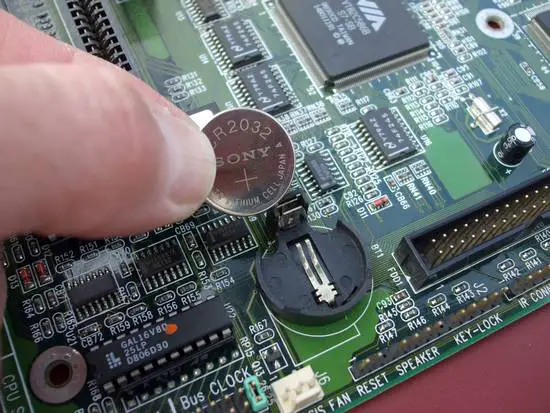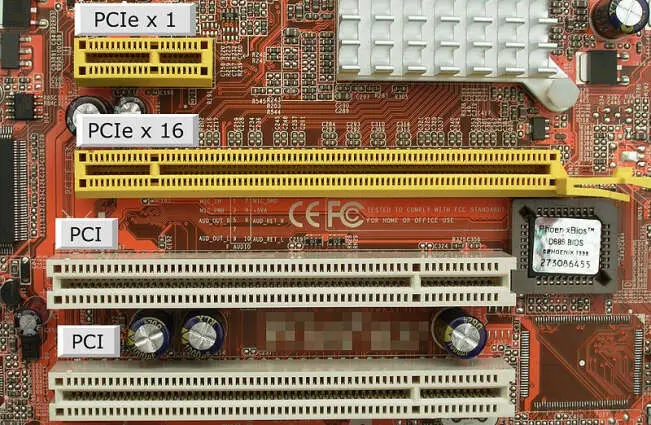How Long do Motherboards Last? Lifespan & Tips
The motherboard is like the base of a computer to which many parts are connected, and when it reaches the end of its lifespan, the computer will no longer function properly, and it is difficult to determine the lifespan of a particular motherboard.
In this article, we will explain the lifespan of a motherboard, its symptoms, and some tips on motherboards’ life.

Do motherboards have an expiration date?
If you look for information about the service life on the motherboard package or the booklets inside, then at most, you can find warranty information. Usually, the warranty period is three years, and this, of course, does not apply to the shelf life of the motherboard itself.
Just like any device, motherboards have a lifespan. However, pinpointing an exact expiration date is challenging. The same motherboard, under different conditions, can function for 5 years or 15. Everything will depend on how exactly you use it.
The standard lifespan of the motherboard
It is believed that the average lifespan of a motherboard is 5-15 years, but this is very arbitrary. This will be influenced by the frequency and conditions of use of the equipment, the quality of the remaining components installed in your PC, and much more.
In general, under regular use without any extreme overloads, you can count on a long, useful life, especially since the motherboard is the most durable part of the PC if you don’t touch it unless necessary.
What can reduce the lifespan of a motherboard?
1. Excessive heating and cooling cycle
The hot temperature inside the computer case is normal, affecting the life of parts inside, like the CPU and GPU. A motherboard is no exception. There are cooling ways such as fans, thermal paste, and heat sinks, but the heating and cooling cycle is bound to disrupt regular operation over time.
We’re not just talking about games or heavy users. Yes, gaming and heavy usage can make the system much hotter and will accelerate the decline in motherboard lifespan. But everyday, casual use can also limit a motherboard’s time serving a computer.
You can use a computer for a while and it will warm up. It will cool down once you close it. This continuous cycle, along with forced cooling by fans and heat sinks, exerts thermal stress from expansion and contraction. This will damage the circuitboard/motherboard or parts after a while. The time is slower than on a gaming system, but it will eventually arrive for all motherboards.
Laptop motherboards are less durable for this very reason. All systems are packaged in a closed container and will not get proper airflow, resulting in increased temperatures and a less durable motherboard.
2. Capacitor life
Electrolytic capacitors are components that are closely related to the lifespan of the motherboard.
Capacitors are parts attached to motherboards that act as storage batteries to ensure stable computer operation.
When the capacitor reaches the end of its life, it will swell, and you can see it at a glance. If you leave it as is and continue to use it, the electrolyte inside the capacitor may leak, causing a strange odor or smoke.
The lifespan of an electrolytic capacitor is 3.5 years when the average temperature is 65℃, and the computer is operated for 32,000 hours.
However, if you use a computer for half that amount, 12 hours a day, it will last 7 years, and if you use a computer 6 hours a day, it will last 15 years.
Be sure to check the status regularly, as it varies depending on the usage environment. Electrolytic capacitors are so crucial that their lifespan is said to be the same as that of the motherboard.
3. CMOS battery life

There is a button battery attached to the motherboard called CMOS.
Since it is a battery, of course, it has a limited lifespan, and problems will occur if the CMOS battery runs out. The battery life is approximately three years, depending on usage.
The motherboard battery is used to power the BIOS. BIOS is software that controls peripheral devices connected to a computer and retains information recorded by the power supply.
If the CMOS battery dies, it will no longer be able to power the BIOS, and the information retained will be lost. As a result, symptoms such as not starting or freezing occur. In such situations, you can replace with a new CMOS battery.
What are the indicators of a malfunctioning motherboard?
One of the most common signs that a motherboard has stopped working is the failure to turn on or boot the computer. This shows itself when the power button is pressed, and nothing happens.
Another sign is strange beeps or sounds during the boot process. These beeps may indicate failures in motherboard components, such as RAM or graphics cards.
The screen may also display startup errors or go black without showing any information. A failure in the motherboard or graphics card can cause this problem.
The clock time is off. The BIOS (or UEFI) controls the computer’s clock. If power to the BIOS is cut off due to battery life, the time and date will be reset to the default settings. If the clock does not correct even after restarting your computer, turn off the power, leave it for a while, and then turn it on again. If the problem persists even after manually adjusting the clock settings, the motherboard battery is most likely dead.
Additionally, if the motherboard is damaged, some USB ports or PCI slots may stop working correctly. This can depict itself with the inability to connect devices, such as a keyboard or mouse.

In any case, if it is suspected that the motherboard is faulty, it is important to take the equipment to a technician specialized in computer repair to assess the situation and perform the necessary diagnostics.
Ways to extend the life of your motherboard
Since I mentioned that it is the conditions of use of the motherboard that largely influence its lifespan, it is worth telling how exactly these conditions can be improved. Therefore, please pay attention to the following:
- Case cooling. With proper cooling, all PC components, not just motherboards, live longer. Therefore, carefully ensure that the air circulation and its temperature are sufficient.
- Good PSU. This also applies not only to the motherboard but to everything in general. The power source must be sufficiently powerful and stable. You should use a special stabilizer to avoid bad PSU cases.
- Humidity. People living near the seas will understand what I’m talking about. In conditions of high air humidity, computers fail faster than in dry climates, so you need to make sure that there is sufficient ventilation in the room with the PC and the PC itself.
- Clean free. There should be no dust or dirt inside the case, so clean it at least a couple of times a year. This should be done using compressed air, but it is better to put aside the brushes and rags.
Also, remember that motherboards are at risk of mechanical damage, so try not to drop the PC unit or the board itself. Because you never know what careless movement could cause your motherboard to break.
Will the motherboard remain useful throughout its lifespan?
At the beginning of this article, we mentioned that the question should be whether the motherboard will die before you use it properly. The answer is probably not. Most of us consider the motherboard useless even before it is damaged.
Our needs are updating or increasing, as are the technologies around us. A motherboard from 20 years ago used a soldered processor, supported a PATA hard drive, a low-functioning graphics card, etc. But now, the motherboard of that era will not be able to handle today’s computing, gaming, or even basic requirements.

Likewise, after a few years of use, you may want to change the CPU or RAM. A few years ago, the motherboard used to support DDR2 RAM. You can’t put the new DDR5 RAM on that board or NVMe SSDs too. You will have to get a new motherboard if you want to do this.
Therefore, your motherboard will become obsolete before it dies if you leave physical damage and electronic failure out of the equation. You will have to upgrade your motherboard sooner or later.
This can happen due to Physical Incompatibility as discussed above. Likewise, manufacturers could stop providing motherboard upgrades to support newer hardware. Additionally, the motherboard may not provide the demanding power needed to run current hardware.
But while your motherboard may become obsolete before it dies, you should always strive to protect it and use every ounce of its power for your work.
